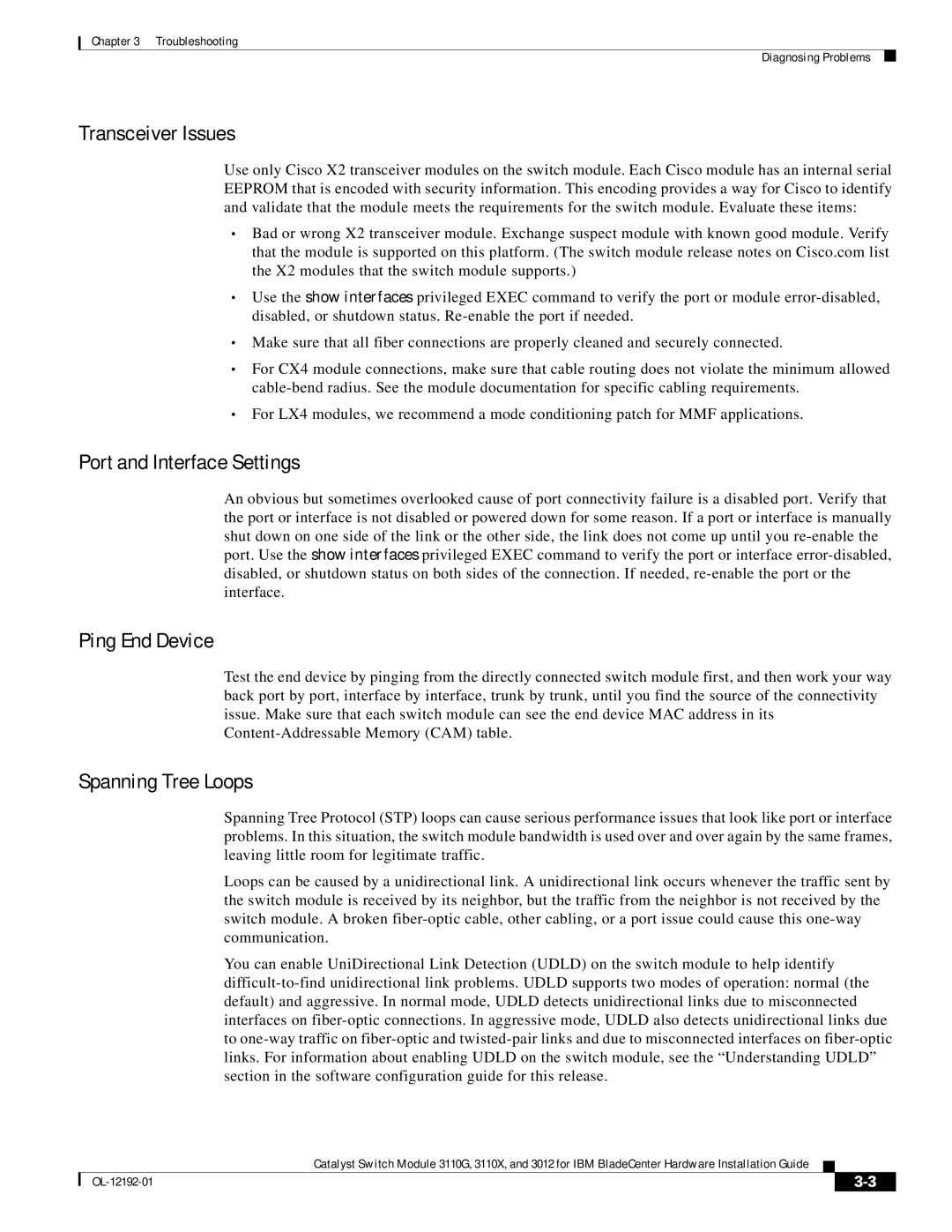
Chapter 3 Troubleshooting
Diagnosing Problems
Transceiver Issues
Use only Cisco X2 transceiver modules on the switch module. Each Cisco module has an internal serial EEPROM that is encoded with security information. This encoding provides a way for Cisco to identify and validate that the module meets the requirements for the switch module. Evaluate these items:
•Bad or wrong X2 transceiver module. Exchange suspect module with known good module. Verify that the module is supported on this platform. (The switch module release notes on Cisco.com list the X2 modules that the switch module supports.)
•Use the show interfaces privileged EXEC command to verify the port or module
•Make sure that all fiber connections are properly cleaned and securely connected.
•For CX4 module connections, make sure that cable routing does not violate the minimum allowed
•For LX4 modules, we recommend a mode conditioning patch for MMF applications.
Port and Interface Settings
An obvious but sometimes overlooked cause of port connectivity failure is a disabled port. Verify that the port or interface is not disabled or powered down for some reason. If a port or interface is manually shut down on one side of the link or the other side, the link does not come up until you
Ping End Device
Test the end device by pinging from the directly connected switch module first, and then work your way back port by port, interface by interface, trunk by trunk, until you find the source of the connectivity issue. Make sure that each switch module can see the end device MAC address in its
Spanning Tree Loops
Spanning Tree Protocol (STP) loops can cause serious performance issues that look like port or interface problems. In this situation, the switch module bandwidth is used over and over again by the same frames, leaving little room for legitimate traffic.
Loops can be caused by a unidirectional link. A unidirectional link occurs whenever the traffic sent by the switch module is received by its neighbor, but the traffic from the neighbor is not received by the switch module. A broken
You can enable UniDirectional Link Detection (UDLD) on the switch module to help identify
Catalyst Switch Module 3110G, 3110X, and 3012 for IBM BladeCenter Hardware Installation Guide
|
| ||
|
|
